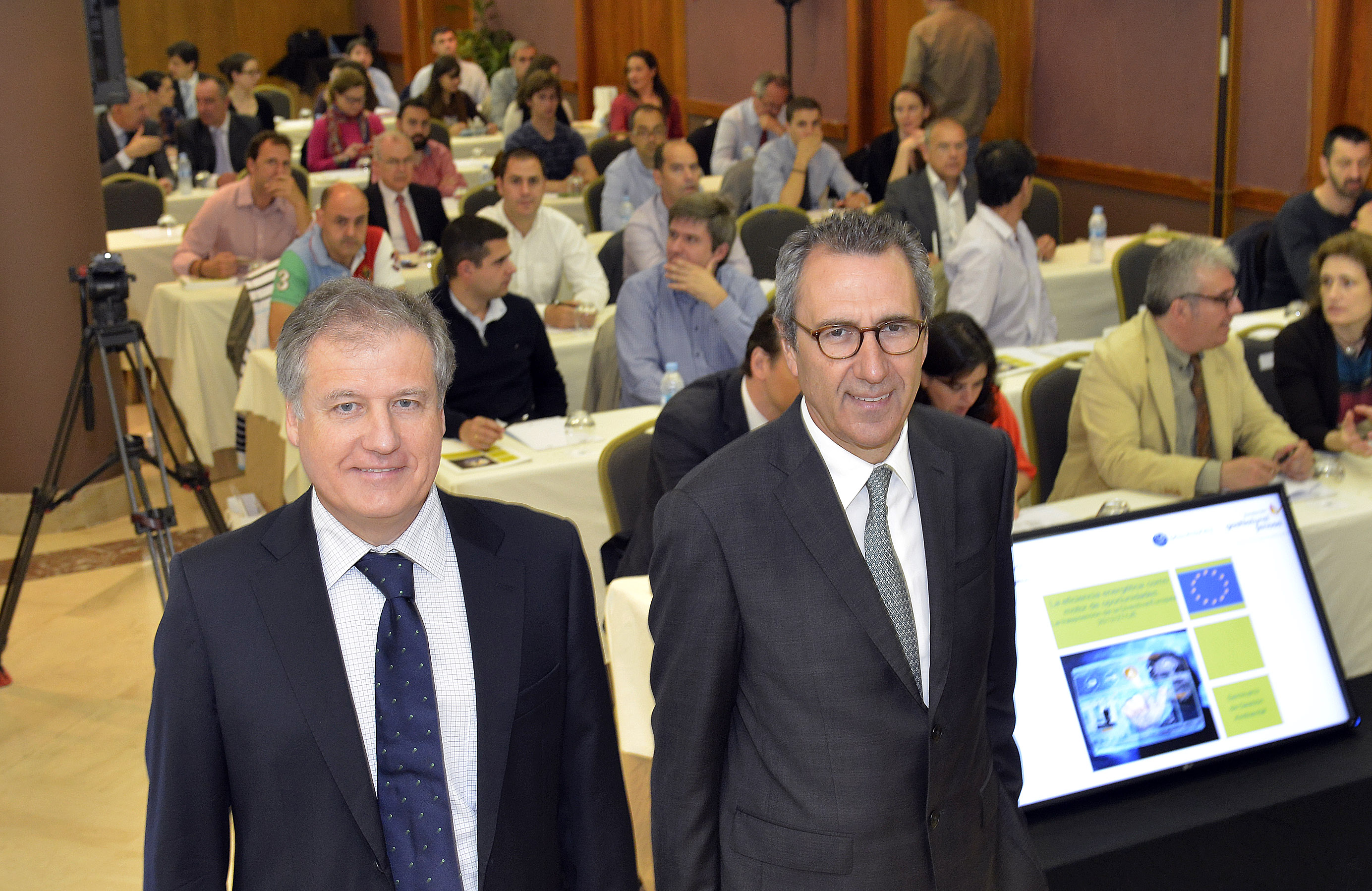The Gas Natural Fenosa Foundation analyses the opportunities of the European energy efficiency directive in Santander
During a seminar organised together with the Government of Cantabria, various experts analysed the transposition of European Directive 2012/27/EU on energy efficiency and how it will boost the economy.
Building renovations can create a new market capable of generating investments of between 2 and 10 billion euros between 2015 and 2050, as well as creating over 150,000 jobs.

The Regional Minister for Innovation, Industry, Tourism and Trade of the Government of Cantabria, Eduardo Arasti, and the General Manager of the Gas Natural Fenosa Foundation, Martí Solà, opened the seminar Energy efficiency as a driver of opportunities today in Santander. Transposition of European Directive 2012/27/EU. The seminar was closed by the Regional Minister for Environment, Land Planning and Town Planning of the Government of Cantabria, Javier Fernández, and attended by over 100 professionals from businesses, engineering companies, universities and public administrations.
During the event the speakers analysed the economic opportunities entailed by the transposition of this directive, which sets specific actions for reducing emissions by 20% throughout the Member States by 2020. The Technical Secretary of Green Building Council España (GBCe), Dolores Huerta, explained that restoring buildings in terms of energy could create a new market that generates from €2 to €10 billion per year between 2015 and 2050. Furthermore, restoring 10 million homes by 2050 could create over 150,000 direct, stable and quality jobs.
Meanwhile, the General Director of Climate Strategy & Partners and speaker in the energy efficiency working group from Energy Efficiency Financial Institutions Group (EEFIG), Peter Sweatman, noted that there is currently not enough public and private investment in the energy efficiency of buildings. What is more, the EEFIG estimates that investments in the energy efficiency of private buildings in Europe would need to increase fivefold by 2030.
Transposition of the directive
GAS NATURAL FENOSA's Regulation Area representative, Ester Sevilla, explained that the transposition of Article 7 of the Directive forces energy marketing companies to implement saving actions equivalent to 1.5% of their annual energy sales to end customers, and that the Government has set savings objectives for Spain for the 2014-2020 period at 15,979 kteo (thousand tonnes equivalent petroleum), equal to a cumulative annual saving of 571 kteo/year.
Ester Sevilla said that, in order to reach this target, proposals include a 40% saving in supplier liability systems, a 31% saving in the use of ERDF funds for implementing scheduled action plans and a 29% saving in other fiscal alternatives, efficiency standards, training and information. The speaker said that, at present, marketing companies only have the possibility of contributing to the National Energy Efficiency Fund.
Energy restoration, a new productive specialisation
The Chairperson of the Spanish Energy Efficiency Technology Platform (PTE-EE), Rocío Fernández, said during her speech that the priority of European funds for 2014-2020 is energy innovation in cities, which means that more financial resources will go to energy efficiency in buildings. Specifically, Fernández noted that over €10 billion of the European funds could go to the energy restoration of buildings through a Spain-EU Association Agreement that includes structural and investment funds dedicated to Spain for a total of €36.9 billion in seven years.
The General Director of Innovation and Industry of the Regional Ministry for Innovation, Industry, Tourism and Trade of the Government of Cantabria, Fernando Javier Rodríguez, reported that 19,623 energy efficiency certifications have been issued for buildings in Cantabria. He also explained the registration process, the problems that arose for short-term implementation and how they were resolved.
Finally, Joan A. Pérez, an industrial engineer and author of "Casos prácticos de eficiencia energética" (Case Studies in Energy Efficiency), published by the Gas Natural Fenosa Foundation, presented two of the 32 case studies described in the book, related to the food industry. He also detailed opportunities in energy efficiency, in the industrial sector and many more, and the technological, economic, social and organisational factors that influence achieving efficiency objectives.
The Gas Natural Fenosa Foundation
The Gas Natural Fenosa Foundation, founded in 1992, targets its activity at the promotion of information, training and increased social awareness on improving energy efficiency and technological innovation in the field of energy while respecting and protecting the environment, and promotes cultural activities through the Gas Museum aimed at preserving and spreading knowledge about the historical and cultural heritage of the sector. It also runs an export assistance programme for small and medium-sized companies. Its international activities are carried out in Algeria, Argentina, Brazil, Colombia, Costa Rica, Mexico, Morocco, Italy and Moldova.
Santander (Spain), 6 May 2015
Share